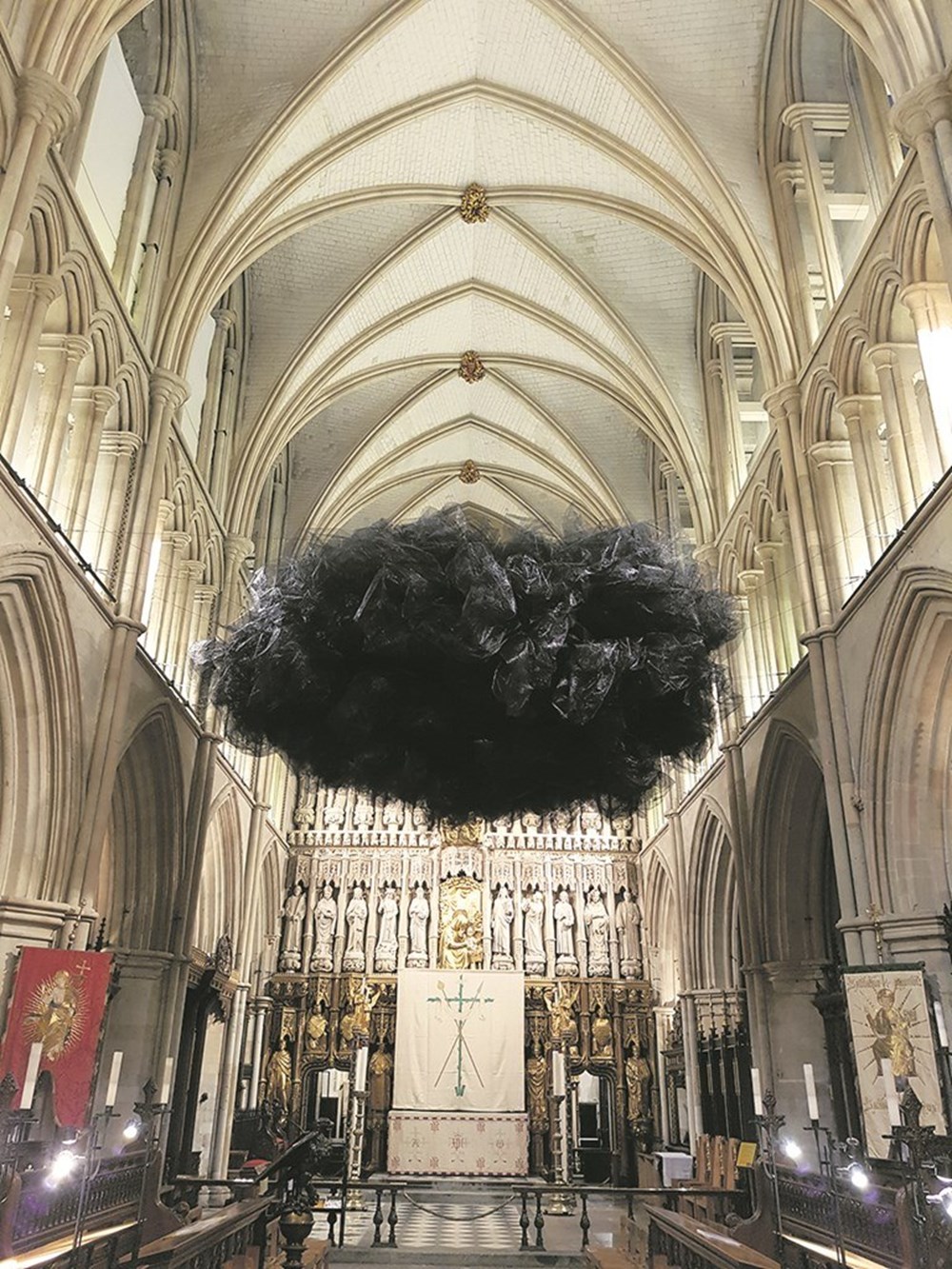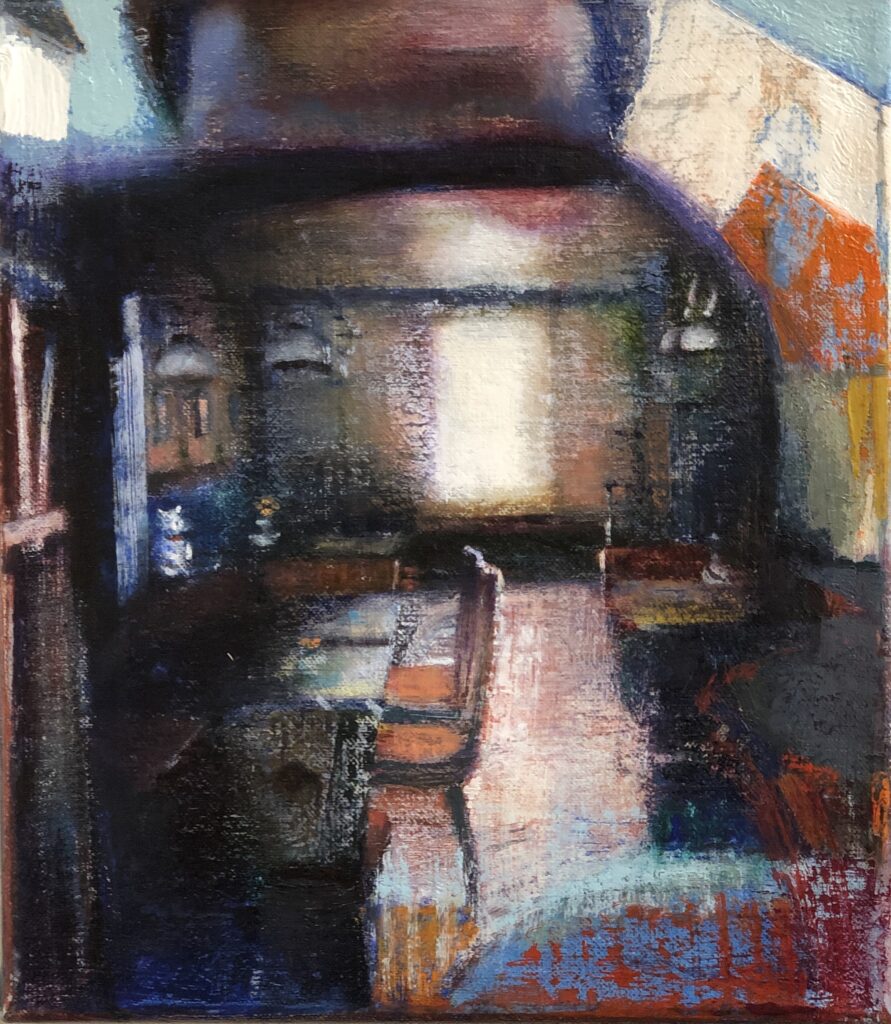Haunted by God’s loophole

Doubt, Susie MacMurray, a temporary installation at Southwark Cathedral. London, constructed of butterfly nets.
I went back online recently to get another glimpse of Susie MacMurray’s masterful A Mixture of Frailties, the first work of hers that stunned me when I stumbled upon her solo exhibition at Danese/Corey seven years ago. I was delighted and a little surprised that it continues to resonate in new ways after the passage of years. This time it brought to mind, of all things, The Winged Victory of Samothrace. A frontal view of her headless figure’s prominent shoulders makes them look like sprouting wings or the stumps left behind by their amputation. This hadn’t occurred to me when I saw the actual piece at the exhibition. MacMurray built it around a tailor’s dummy—as she does with her signature garment sculptures—this time enveloping the curvy armature with limp latex gloves. On the floor, they form a train that flows outward and downward in all directions as if the garment were melting. Conversely, the figure seems to rise up out of the floor from under that network of gloves. It’s funny to see in this earthbound dress an ironic echo of the ancient sculpture’s martial grandeur, especially since this work glows with a quietly, almost self-defeating pathos all its own. The fact that you’re looking at what could be a lifetime supply—a life sentence, as it were—of dishwashing gloves both anchors and intensifies, by contrast, the work’s unlikely glory. By creating a ballroom gown out of them, she magically transforms all those flaccid tubes into a spectacular vestment—female power constructed with reminders of male impotence. That’s either a wry sort of Jacobin feminism or honest testimony about how little power any of us actually have. I tend toward the latter. With MacMurray, what looks like an apotheosis always comes with amusing asterisks. The way this dazzling matrix of frailties rises up from the floor, ready for lift-off, seems to echo the triumphant flight promised in the Greek sculpture, but our glove lady isn’t getting airborne any time soon. She is both imprisoned and glorified by all the chores she would love to flee. Feminist interpretations aside, what seems to be embodied here is something wiser and more universal. This beatification of scut work embodies a rare insight into the dignity and worth of long subservience and surrender to a humble task.
All of these impressions reconfirmed for me that much of MacMurray’s work has to do with the unity of polarities in life—in this case, how drudgery and imprisonment and servitude can actually clothe triumph and transformation, or at least can be transmuted to reveal them. A similar truth lies at the heart of the world’s wisdom traditions: the identity of form and emptiness in Buddhism, as well as the notion that your everyday mind is the Buddha, for one. In a different way, the Beatitudes hint at paradoxical realities—the last shall be first—set within a more dramatic spiritual narrative. One can find other corollaries. Her wisdom applies to art-making itself, pointing toward a seminal realization for practicing artists of how the freedom of creative expression dwells within the tedium of repetition, craft and patience. MacMurray’s work requires a great deal of all three. For her, it’s meditative. This equivalence of triumph and drudgery applies to her installations as much as, if not more than, the work of a guru of art-as-process such as Chuck Close. His words are well known: “Inspiration is for amateurs, the rest of us just show up and get to work.” The paradox of the work ethic itself is that what’s good in life can’t be severed from often tedious labor. The process of making one of her pieces embodies this paradox: Medusa required a year to make,

 choose an occasional painting for his walls.
choose an occasional painting for his walls.